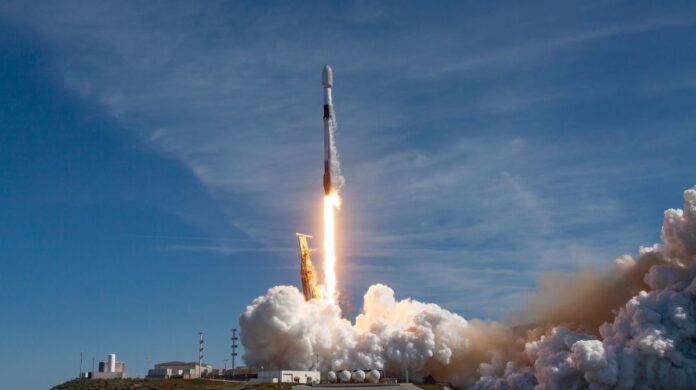SpaceX aims to pull off an unprecedented launch doubleheader tonight (July 27).
Elon Musk’s company plans to launch 22 of its Starlink internet satellites atop a Falcon 9 rocket from Florida’s Cape Canaveral Space Force Station tonight at 10:20 p.m. EDT (0220 GMT on July 28).
And a Falcon Heavy carrying the huge Jupiter 3 communications satellite is scheduled to lift off during a 99-minute window that opens at 11:04 p.m. EDT (0304 GMT on July 28) from NASA’s Kennedy Space Center, which is also on Florida’s Space Coast.
We could therefore see two SpaceX launches, by two different types of rocket, just 44 minutes apart, from pads within a few miles of each other. That would be quite a sight, and it would break new ground for spaceflight.
According to Space Launch Delta 45, the unit of the U.S. Space Force that controls Cape Canaveral Space Force Station, the current record for shortest time between launches from the U.S. East Coast is 97 minutes. And that mark dates all the way back to 1966.
Related: 8 ways SpaceX has transformed space travel
SLD 45 has the opportunity to make history tonight, as we support two launches between 02:04 UTC and 04:44 UTC. This could represent the shortest time between launches from the ER on record. The previous was 1 hour 37 minutes on Sept. 12, 1966 when Gemini 11 & Titan-11 launched. pic.twitter.com/4GyOULazSJJuly 27, 2023
You can watch both of tonight’s liftoffs here on Space.com, courtesy of SpaceX, if they happen. And there’s no guarantee that they will, of course. Florida’s summertime weather is famously iffy; launch-scrubbing storms can boil up quickly on the Space Coast.
Then there are potential technical issues. The Falcon Heavy was supposed to fly last night, for example, but SpaceX shut things down 65 seconds before liftoff due to an unspecified “violation of abort criteria.” The company aborted two Falcon 9 Starlink missions recently as well, before launching them successfully the next day.
Each of tonight’s two planned launches is interesting in its own right. The Starlink mission, for example, features a Falcon 9 whose first stage already has 14 flights under its belt. A successful launch would bring that booster within one flight of SpaceX’s reuse record, which is held by two different Falcon 9 first stages.
And tonight’s Falcon 9 will likely fly again in the future; SpaceX plans to land it on a ship at sea about 8.5 minutes after launch.
Meanwhile, tonight’s Falcon Heavy mission will loft the largest commercial communications satellite ever built. Jupiter 3 weighs 10.2 tons (9.1 metric tons) and, when fully deployed, will have a wingspan similar to that of a commercial jet, according to its operator, Hughes Network Systems.
And every Falcon Heavy mission is special, given how powerful the rocket is and how rarely it leaves the ground (compared to the Falcon 9, anyway). The Heavy has flown just six times to date, though three of those missions have occurred in the last eight months.

